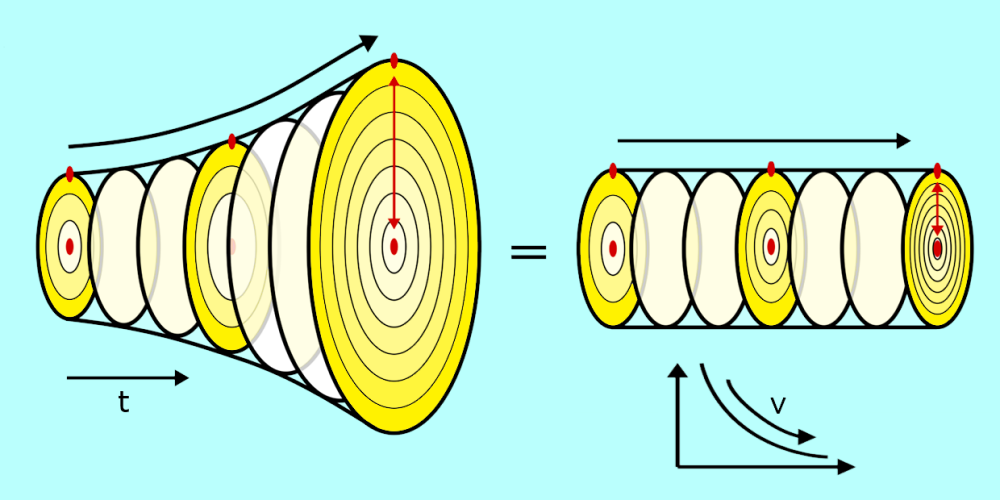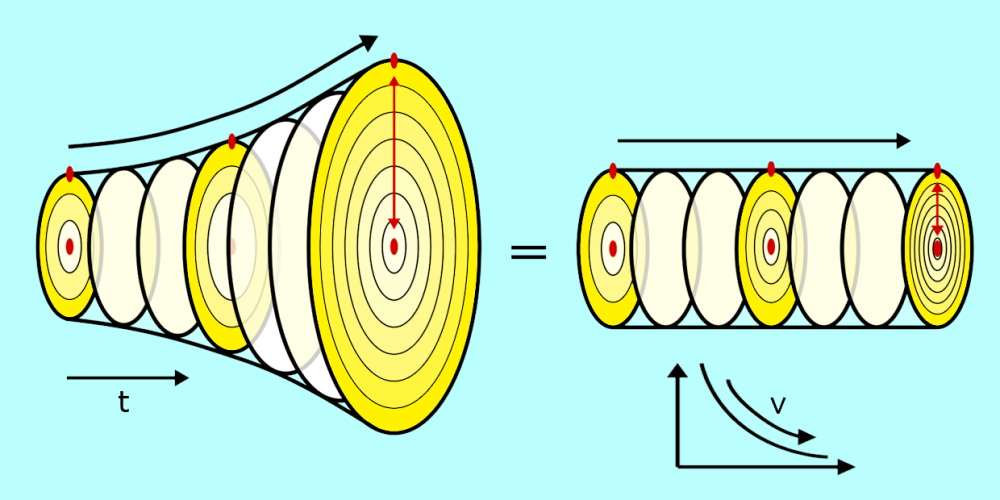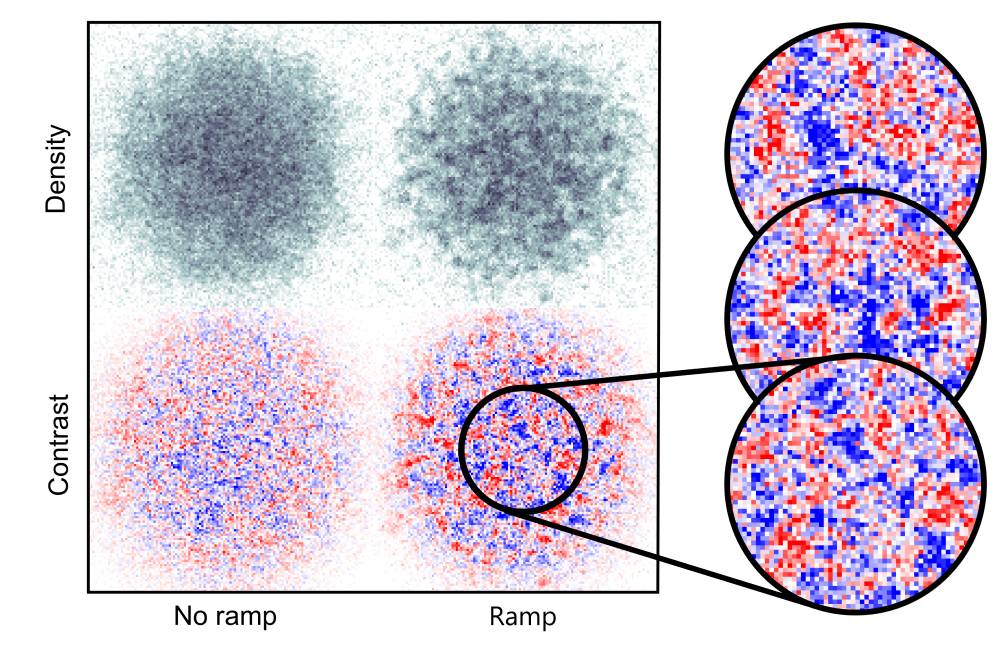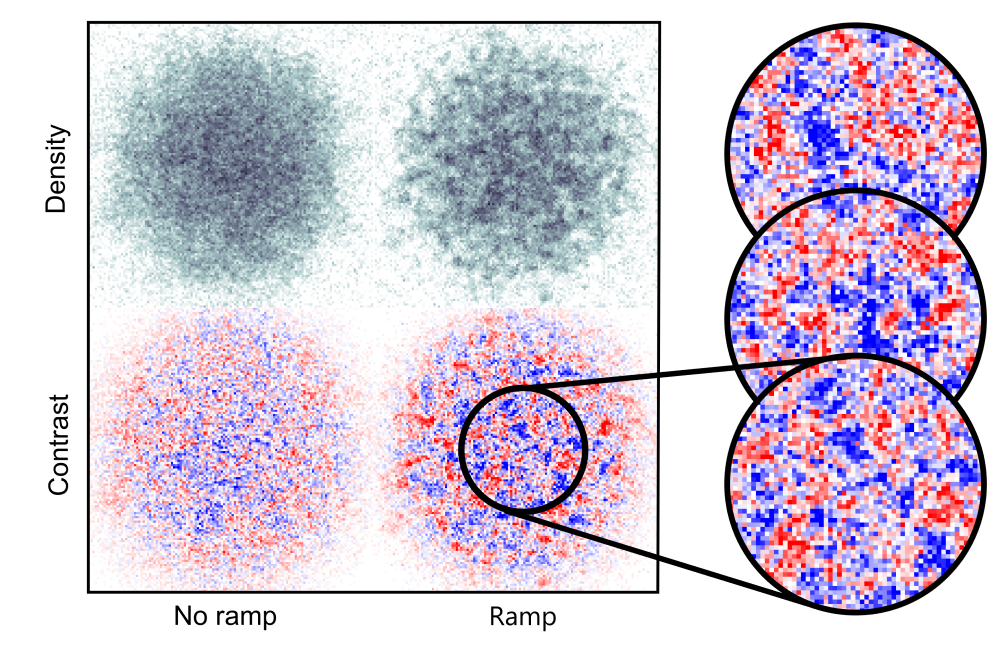Expanding Universe in the Lab
By analyzing the large-scale structure of the Universe, cosmologists have inferred that space expanded rapidly in the moments after the big bang. During that expansion, the Universe was empty, except for quantum fields present in the vacuum. How those fields evolved in the curved spacetime of an inflating Universe is still an open question whose solution may help scientists understand how particles came into existence. Researchers at Heidelberg University, Germany, have now produced an analog system for studying these fields [1]. In a Bose-Einstein condensate (BEC) of ultracold atoms, they demonstrate properties that map to curved space and time, providing a new tool for simulating quantum field evolution in an expanding universe.
Reproducing curved spacetime is no easy task, as it requires contorting both the space aspect and time aspect of the system. Spatial curvature concerns the system’s geometry: whether it is flat, spherical, or hyperbolic. Time curvature involves the system’s evolution: whether it is expanding, contracting, or static. In 1980, William Unruh of the University of British Columbia, Canada, pointed out that sound waves propagating in a moving fluid offer an analogy to light waves propagating in curved spacetime. Since then, other types of simulators have been developed, all using fluid flow to reproduce the effects of curvature.
Building on these concepts, Markus Oberthaler and his colleagues at Heidelberg University engineered a curved spacetime analog in a motionless BEC fluid. Their trick was to control the speed of sound in the BEC. For example, by making the sound speed slower, they could increase the effective distance between two points—as it will take longer for sound to travel from one point to the other. This speed control can be used to create an effective “bending” of spacetime.
The researchers realized their system by confining ultracold potassium-39 ions in an optical trap. The trap modified the BEC density distribution, enabling spatial control of the sound speed. The researchers showed, for example, that a particular trap configuration generated a density profile with a smooth peak in the center, causing the sound speed to be high in the center and low around the periphery. Sound waves traversing this gas should bend away from the center in the pattern that’s expected for a 2D projection of a hyperbolic universe.
To verify that their BEC approximated a spatially curved geometry, the researchers focused a laser beam near the BEC’s center and observed density vibrations that correspond to quantized sound waves called phonons. They measured the position of these phonons as they propagated outward from the focal point and found that the trajectories matched predictions for a spatially curved geometry. They repeated these experiments for both hyperbolic and spherical geometries.
For the temporal control of the sound speed, the team applied a uniform magnetic field to the gas, which changed the microscopic interaction strengths between potassium atoms. By weakening these interactions over time, the BEC behaved as if it were expanding. “This is an important step since we can implement expansion without actively expanding the system or changing the density distribution,” Oberthaler says.
To study the effects of expansion, the researchers observed how the BEC’s density distribution changed after ramping down of the interaction strength—corresponding to a universe roughly tripling in size. They found that enhanced density fluctuations appeared on a large scale after the ramp, as expected in expanding space. Those enhanced density fluctuations corresponded to “particle production” within the phonon field, in agreement with quantum field theory predictions for an expanding universe.
By modifying the ramp behavior, the researchers observed how the density fluctuations evolved over time in accelerating, decelerating, and uniform expansion scenarios. In most cases, density contrast correlations increased after the ramp, as expected for a growing sound cone. The time evolution of density fluctuations also matched so-called Sakharov oscillations, which are predicted in expanding universe models.
Chen-Lung Hung, a physicist who works with ultracold quantum gases at Purdue University, Indiana, says that the demonstration brings together decades of theory and experimental concepts. “The tools were out there, but this is the first time everything has been nicely combined to show that it’s possible to engineer curved spacetime and key experimental signatures.” It may be possible to simulate acoustic black holes and to visualize the evolution of quantum fields in these novel geometries in a tabletop experiment, Hung adds.
According to Stefano Liberati, who studies quantum and classical gravity at Italy’s International Institute of Advanced Studies, the most exciting thing about the BEC simulator is that it’s very versatile. “They can separately control curvature and time dependence, which gives the possibility not only of standard model simulations but also simulating exotic physics,” he says.
–Rachel Berkowitz
Rachel Berkowitz is a Corresponding Editor for Physics Magazine based in Vancouver, Canada.
References
- C. Viermann et al., “Quantum field simulator for dynamics in curved spacetime,” Nature 611, 260 (2022).







